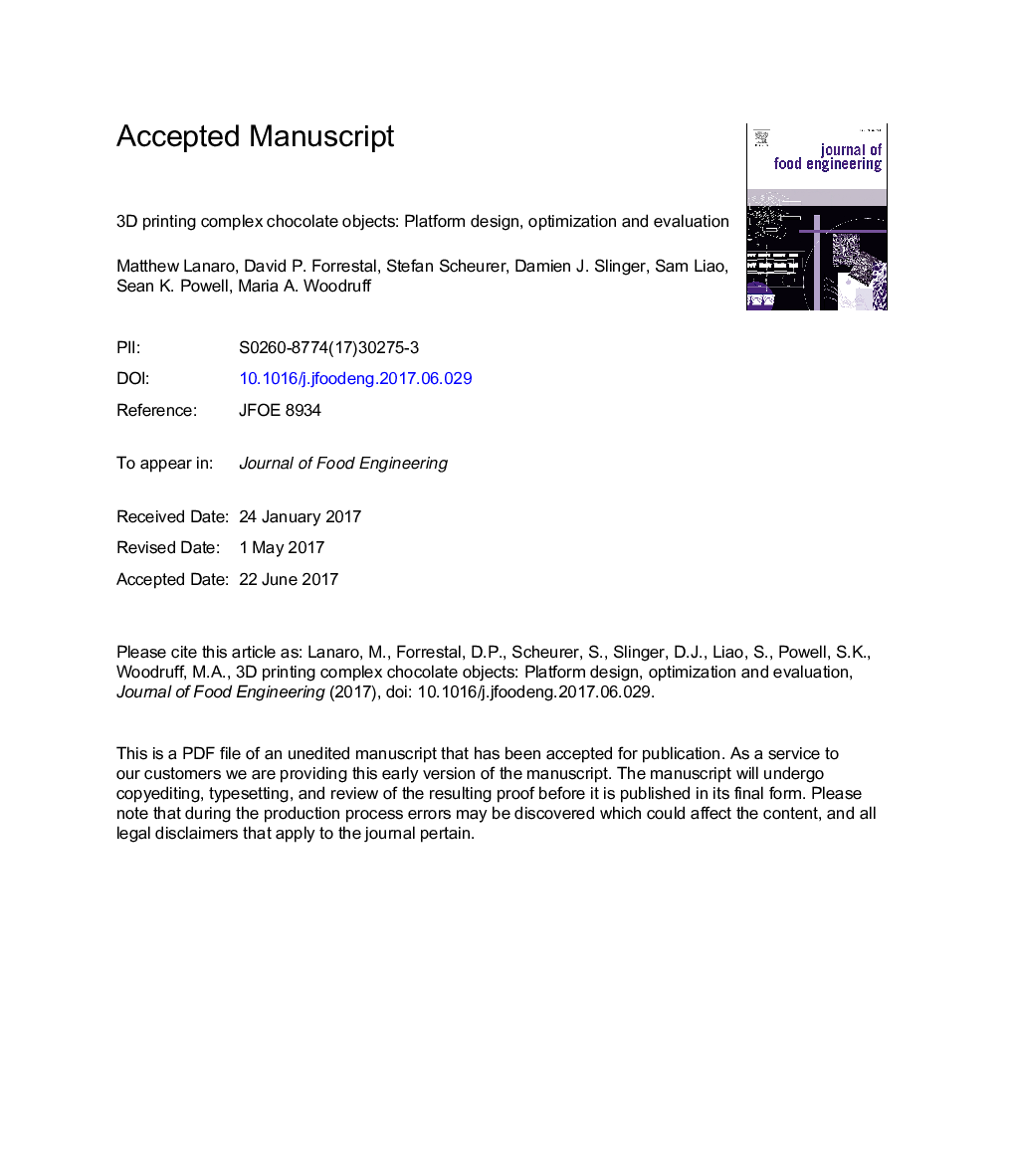| Article ID | Journal | Published Year | Pages | File Type |
|---|---|---|---|---|
| 4908889 | Journal of Food Engineering | 2017 | 30 Pages |
Abstract
3D printing of foods is an emerging technology that makes it possible to produce unique and complex food items. A number of different foods have already been 3D printed, however, better characterisation of fabrication parameters is still necessary to improve quality and efficiency. In this paper, we present details of the construction of a melt extrusion 3D printer based on readily available open source components. Several key fabrication parameters were investigated and optimised to enable printing complex 3D objects made from chocolate. The ability of an extruded chocolate fibre to span large distances without collapsing was investigated by adjusting variables such as movement speeds, extrusion rates and cooling rates. We found that the chocolate spanning distance was unaffected by movement speeds ranging from 300 to 700 mm/min, and that the optimal extrusion rate was 10-20% leaner. Furthermore, the spanning distance improved by directing air across the printing part, lowering the air temperature by approximately 3.5 °C. The results from this research can be applied to 3D printing of complex objects using chocolate and other similar foods.
Related Topics
Physical Sciences and Engineering
Chemical Engineering
Chemical Engineering (General)
Authors
Matthew Lanaro, David P. Forrestal, Stefan Scheurer, Damien J. Slinger, Sam Liao, Sean K. Powell, Maria A. Woodruff,
